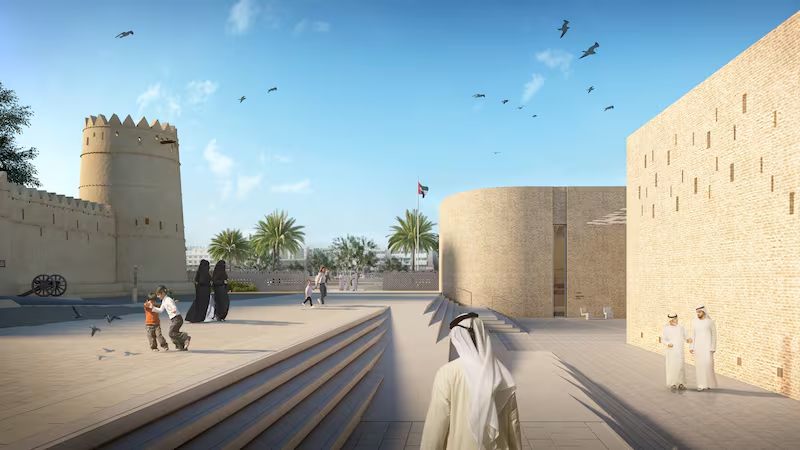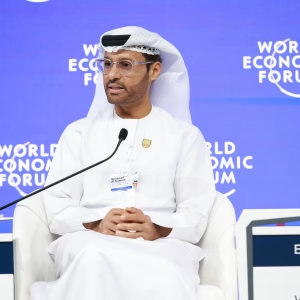A New Dawn for Heritage and Legacy
After years of planning, renovation, and careful excavation, the Al Ain Museum is poised to reopen its doors to the public. This revival is not just a renovation—it is a reawakening of the region’s living memory, bridging past and present in a way that celebrates identity, innovation, and community. In its redesigned form, the museum promises immersive experiences, revived architecture, newly discovered finds, and renewed purpose as both a cultural anchor and a learning hub.
Why This Reopening Matters
The Al Ain Museum holds a special place in the UAE’s story—it was the nation’s first museum and has long served as a guardian of archaeological treasures, local traditions, and regional identity. Its reopening signals more than just a refreshed building; it reflects a commitment to cultural continuity, inviting Emiratis and international visitors alike to connect meaningfully with the region’s deep roots.
This moment is ripe with symbolic weight. In preserving the old while embracing the new, the museum embodies a forward-looking respect for history. Its revival also enhances the visitor experience across Al Ain’s rich cultural circuit—oases, forts, archaeological parks—and strengthens the tapestry of UAE heritage tourism.

The Transformation: Architecture, Discovery, Experience
Merging Old and New in Design
The redevelopment was entrusted to visionary architects who treated the original museum structure as the heart of the new design. Rather than demolish, they wove fresh architectural elements around the historic core, expanding the footprint to over 8,000 m². The result is a dialogue between eras: ancient walls meet contemporary spaces, and heritage meets innovation in balance.
Excavations Unearth Hidden Stories
As walls were lifted and foundations deepened, the redevelopment revealed unheard stories: pre-Islamic tombs, burial grounds, and archaeological strata previously buried beneath the earth. These discoveries temporarily paused construction, but ultimately enriched the museum’s narrative. Now, visitors will walk through spaces that were once sealed in time, encountering relics that had not been seen for centuries.

Enhanced Visitor Experience
Gone are the days of static displays behind glass walls. The redeveloped museum offers interactive exhibits, immersive storytelling zones, and digital aids catering to diverse audiences. Educational labs and conservation workshops now operate behind transparent walls, inviting curious minds to see the work of preservation in action. Special care has been taken to ensure accessibility, with inclusive design features and multiple formats of engagement.
The Role of Sultan Fort
Part of the museum’s transformation includes the integration of Sultan Fort (Eastern Fort), which perches at the edge of the Al Ain Oasis. Built in the early 20th century, this fort was once a local stronghold—and now it becomes an immersive chapter in the museum’s storyline. Visitors can traverse its ramparts, imagine village life, and connect the fort’s narrative to the broader tapestry of the region.

What You’ll Experience Inside
8,000 Years of Inhabitation
From the Paleolithic to modern times, the museum’s core displays chart the story of settlement, survival, and innovation in this arid land. Artefacts from the Bronze Age, Iron Age, and Islamic period punctuate thematic galleries—showcasing tools, pottery, trade goods, and daily life objects that anchor local identity in a wider regional context.
The Ingenious Aflaj Irrigation System
One standout narrative thread is the aflaj (traditional irrigation) network—ancient water-management systems that enabled life in desert landscapes. Visitors will see model recreations, diagrams, and real excavated channels, gaining insight into how communities harnessed scarce resources to sustain agriculture, settlement, and growth over millennia.
Archaeological Zones Open to Public
The newly discovered tombs and burial chambers within the museum grounds are no longer hidden—they now form part of the visitor journey. Carefully preserved, with guided paths and explanatory signage, they allow guests to literally walk among the past.
Research, Conservation & Education
An important shift in the museum’s ethos is its active role in research and teaching. It houses labs, archival spaces, and conservation studios. Scholars, students, and enthusiasts can access primary artefacts, engage in workshop sessions, and observe behind-the-scenes preservation work.
Temporary Exhibitions, Events & Community Programs
Alongside the permanent galleries, the museum features rotating exhibitions that focus on themes like local artists, regional exchange routes, and cultural revivals. Regular public programs—lectures, workshops, storytelling sessions—will animate the space. A café, retail shop, and reading room round out the holistic visitor experience.
Human Stories Behind the Walls
One of the most striking features of this reopening is its human touch. The museum team has sought to keep alive the emotional connection to the past. Familiar artefacts cherished by generations remain in place. The old well, large storage jars, and personal contributions from local families are preserved within the new layout, so returning visitors feel a sense of continuity.
Curators often speak of the museum as a collective home—built not only by expert hands, but by community participation. People had donated their own tools, family heirlooms, and items from farms and homes, contributing to the narrative of shared belonging. In its rebirth, the museum carries forward that communal spirit, inviting new voices into its stewardship.
Reopening Plans & Public Invitation
The museum is scheduled to welcome the public on 24 October, marking the culmination of years of vision and work. An inaugural ceremony will celebrate not just bricks and mortar, but relationships—among past generations, present communities, and future learners.
From day one, visitors can expect a multi-sensory journey: ambient soundscapes, tactile installations, guided routes, and digital storytelling companions. Families, school groups, heritage buffs, tourists—everyone is invited to step into a space of discovery, wonder, and reflection.

Significance for Al Ain and Beyond
Al Ain is often known as the “Garden City” of the UAE, renowned for its oases, forts, and archaeological vestiges. This museum reopening strengthens Al Ain’s role as a cornerstone of national heritage. It ties together world-heritage sites like Hili Archaeological Park, the oasis system, and historic neighborhoods into a cohesive cultural corridor.
For the UAE, it reflects a broader cultural strategy: preserving roots while embracing modernization, showcasing identity while welcoming global engagement. The museum becomes both a landmark and a bridge—between heritage and creativity, between past voices and future narratives.
Looking Ahead: Museum as Living Space
In most museums, artefacts lie behind glass. Here, the Al Ain Museum aims to be dynamic, evolving, participative. Plans include:
- Ongoing excavations around the site, bringing new finds into view
- Digital storytelling expansions, augmented reality (AR) tours, and virtual access
- Community-curated exhibits, drawing on oral histories and local knowledge
- Youth engagement programs where young visitors help co-design displays
- Collaborations with international institutions to exchange artefacts and ideas
In time, the museum hopes not only to preserve history—but to spark conversation, innovation, and identity renewal.
Final Thoughts
The reopening of the Al Ain Museum is far more than a building rededication. It is a testament to the resilience of memory, the possibilities of design, and the power of community. Walking its halls, one steps into centuries of human endeavor, imagination, and adaptation. It tells us—and reminds us—that heritage is never static, but ever alive, ready to speak anew.
Do follow UAE Stories on Instagram
Read Next – Binghatti’s Sub-AED2M Unit Sales Surge Past 12,000 in 2025















